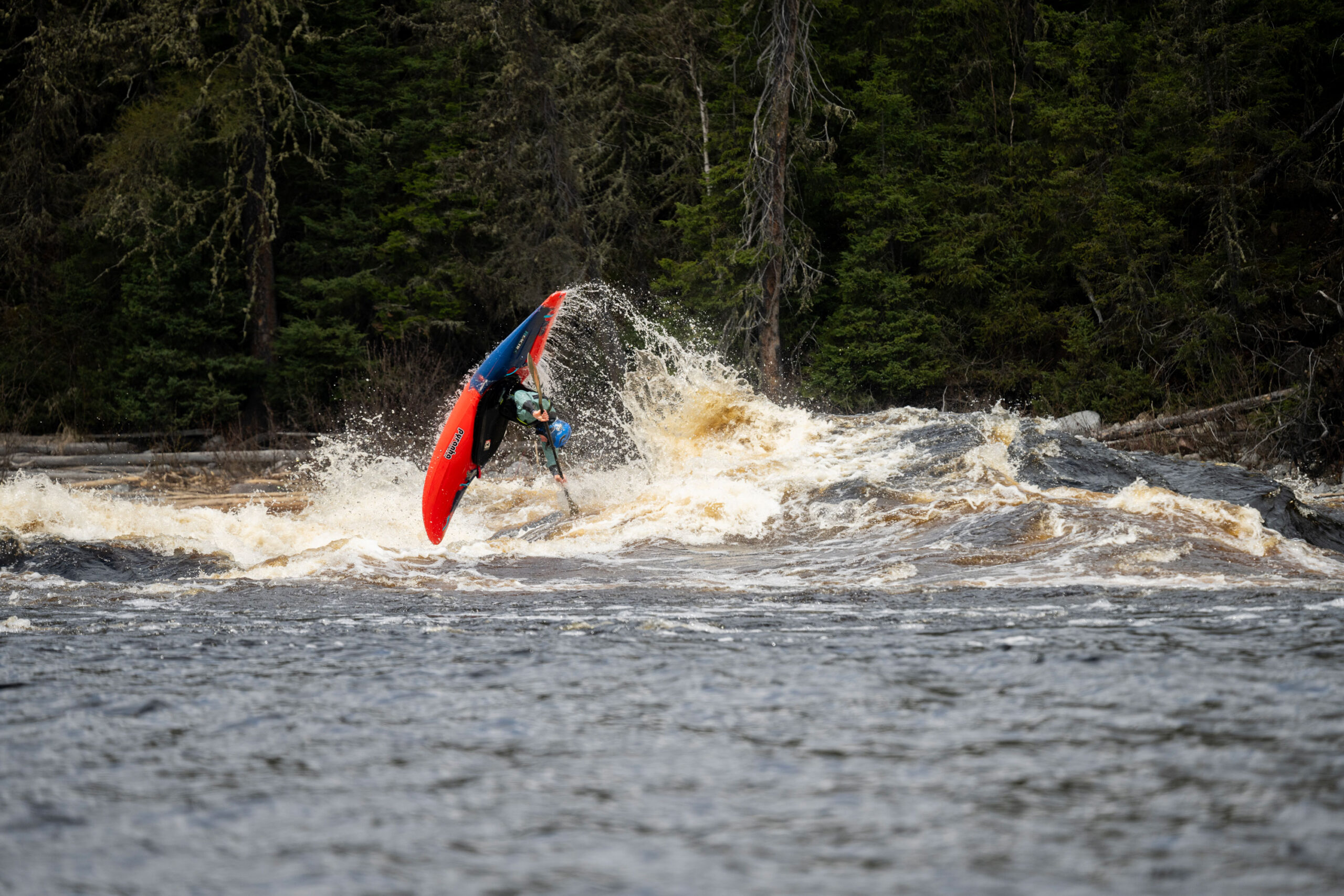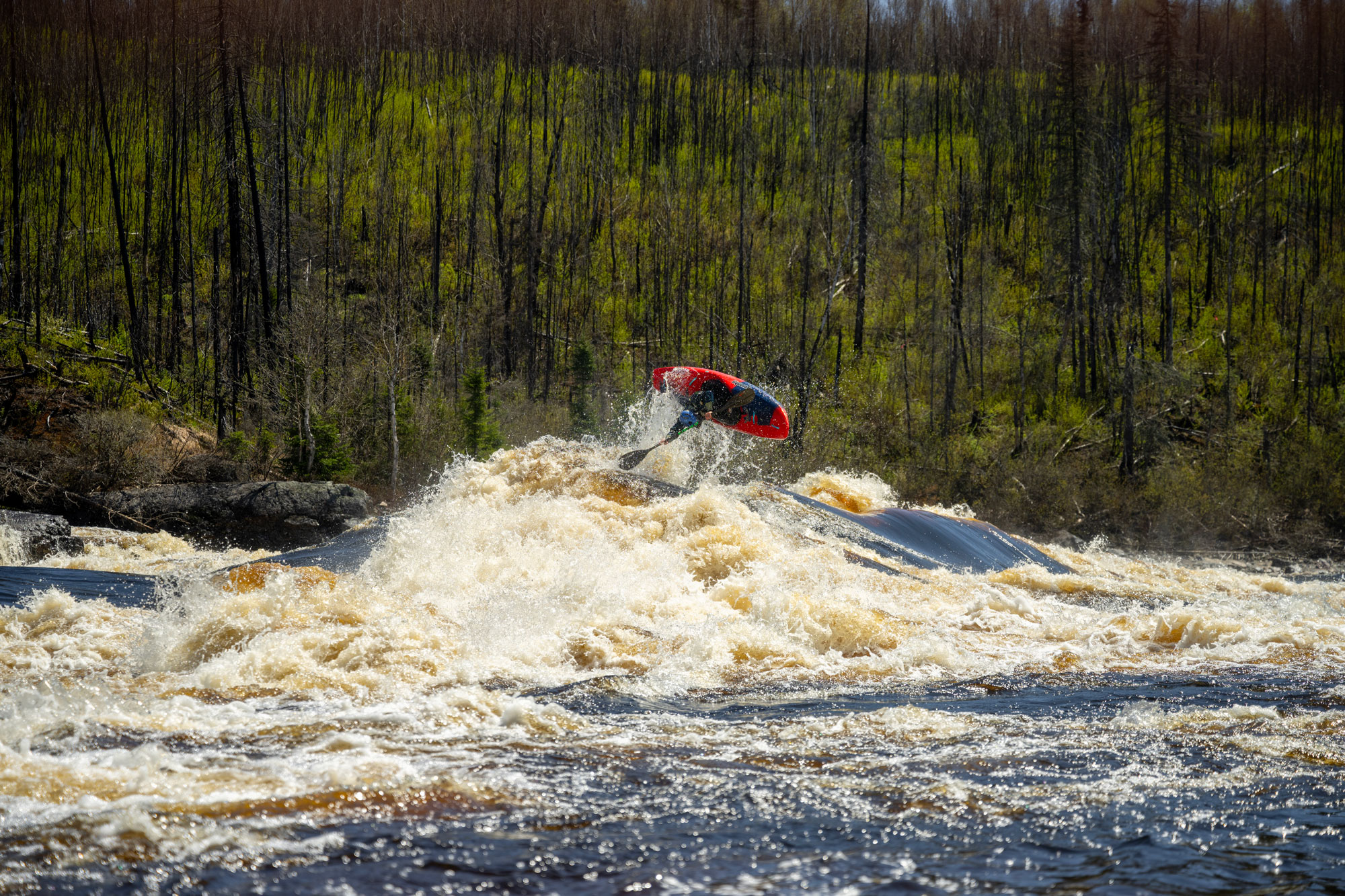The kick-flip in a kayak is honestly one of the harder tricks I’ve learned. I remember wanting it so bad but just not quite understanding how all the pieces fit together. When I watched my friends do them, it was obvious just how easy and effortless it was supposed to be. It is one of those things that doesn’t work until it just clicks. It is simply too much to think about and pick apart in too short of a time. After too many attempts to count, it finally came around and stuck. It was like leveling up in a video game. All of a sudden I had access to one of the best rotations in the sport of kayaking.
For around 7-8 years the kick-flip has been my favorite move for downriver freestyle. They are an effortless flick that can be factored in to almost any rapid with a good wave. It became an obsession of mine. Chasing the weightless, airborne feeling of launching off the top of a wave. But not all waves are created equal. Some crash a bit at the top, some curl to the side, and some are a perfect “Eiffel Tower” ramp to the moon.

Soon after getting the kick-flip in my repertoire I started to play around with timing, paddle placement, hip rotation and whatnot. I wanted to see how many variations of the trick I could capture. My time spent on the North Fork of the Payette was crucial for learning how to dial in the slightest differences in each kick-flip. I remember writing in my notebook about the best waves on the North Fork and how you are supposed to approach each one. I listed off around 50-60 spots that were “perfect for kick-flips,” despite the unbelievable exposure and danger of throwing kick-flips in fast, shallow class 5. The North Fork provided 15 miles of hard whitewater and awesome waves for launching. It taught me so much as a young paddler that applied to nearly every division on paddling I do. I was simply obsessed. Obsessed with the opportunity to be airborne in a kayak. It is my favorite feeling and has driven my motivation and style in kayaking for the last decade.
As my relationship with air-time progressed it became apparent that boat design REALLY matters for getting pop off of waves. You need speed, rocker, and most importantly, volume. When the ReactR first came out, I pretty instantly realized that it added a whole new dimension to the kick-flips I had been throwing for years. All of a sudden I had more pop than ever before. The rocker crests waves automatically and the wide stern slaps the peak with more potential than any boat I’ve paddled in the past.

It wasn’t until I went to the Mistassibi in Quebec that I had waves big enough and consistent enough to essentially “max out.” I truly don’t think I can go much bigger than on a wave called Molly. The eddy access of this wave sets up a kick-flip conveyor belt of free refills. You can simply paddle to the top of the eddy, peel out, and launch to the moon. This allowed me to have consistent feedback on bigger and bigger launches. I always try to go as big as possible for the wave that I’m on but nothing had previously compared to the size of Molly wave. I started throwing kick-flips on repeat until my arms felt like they were going to fall off. It was so good I couldn’t stop. Every kick-flip is slightly different, a true snowflake of a trick. The wave bubbles and crashes and pops with constantly changing potential.
This wave specifically allowed me to enact a move I call “the layout.” You have to paddle as hard as you possibly can until you redline. Then, once you reach the base of the wave you have to plant your strokes with as much travel and power as possible. When your bow is about to reach the peak of the wave, you have to plant one last initiation stroke as far forward as possible and pull with everything you have. You got to pull and lean as far back as possible while keeping the initiation stroke in the water as long as you can.
That is where this wave started to be a bit different. I kept power on my left blade as long as I could until I was simply running out of water to use. In a few attempts I actually went too big and water beneath me turned to air. There was nothing to rotate off of because I was too far out of the water. However, on this specific rotation, the wave was in perfect form and my paddle strokes were timed correctly. All of the once disorienting puzzle pieces fell perfectly into place.
I peaked out with just enough room to initiate my rotation and just enough air to be as big as possible. The biggest difference I noticed that I have never felt before was that the wind whistled in my ears mid kick-flip. I didn’t know that was possible. I didn’t even think I would notice such a tiny detail when there was so much other stuff happening around me. Especially in a sport drowned in sustained white noise. It was wild to paddle back into the eddy with that little whistle noise playing in my head on repeat. Such a small and benign sound that we hear all the time. But somehow in this fraction of a second it was so valuable.

Huge thanks to Leif Anderson for capturing this moment. The angle perfectly captures everything I love about the Mistassibi and my favorite part of kayaking.



